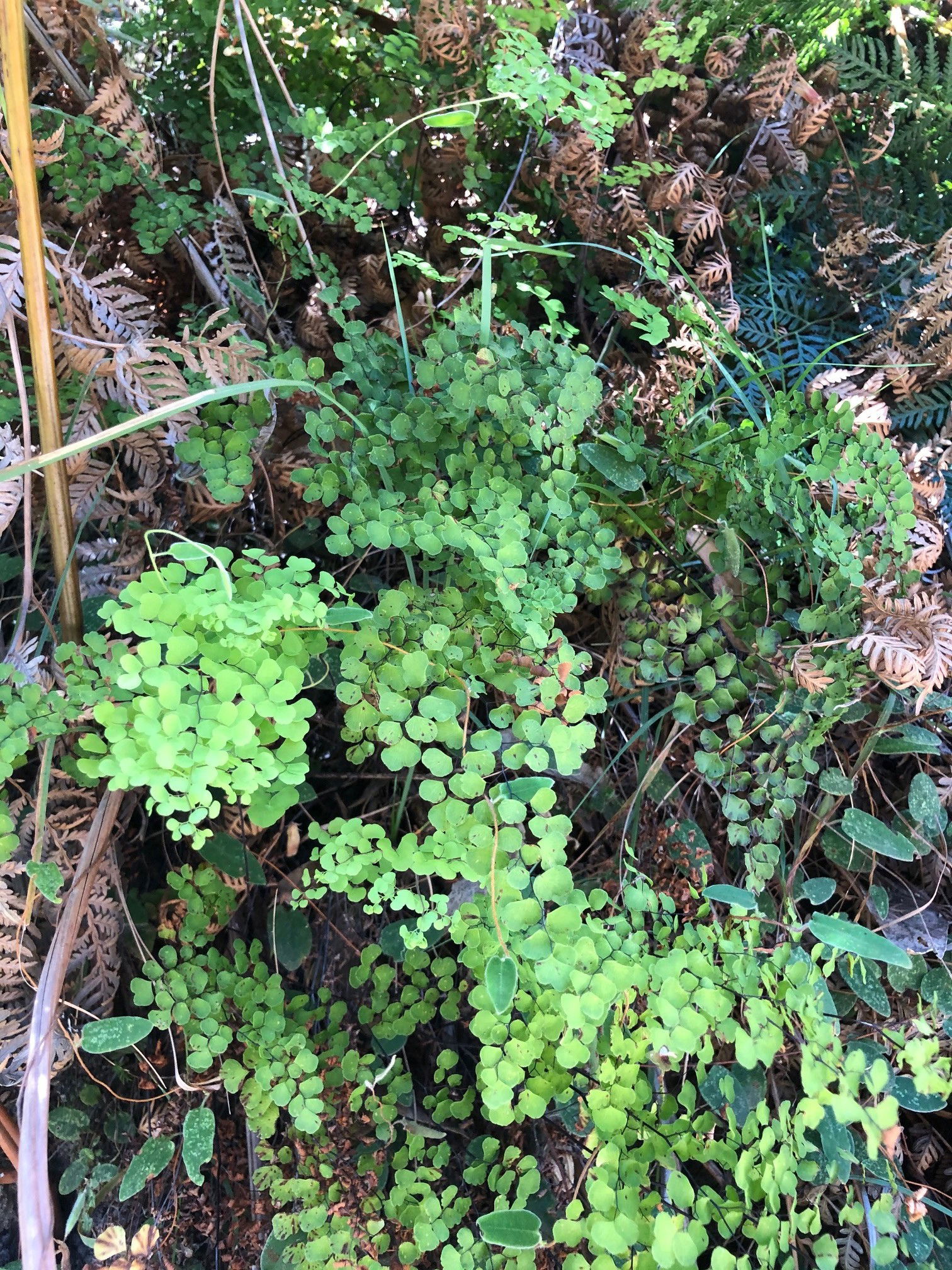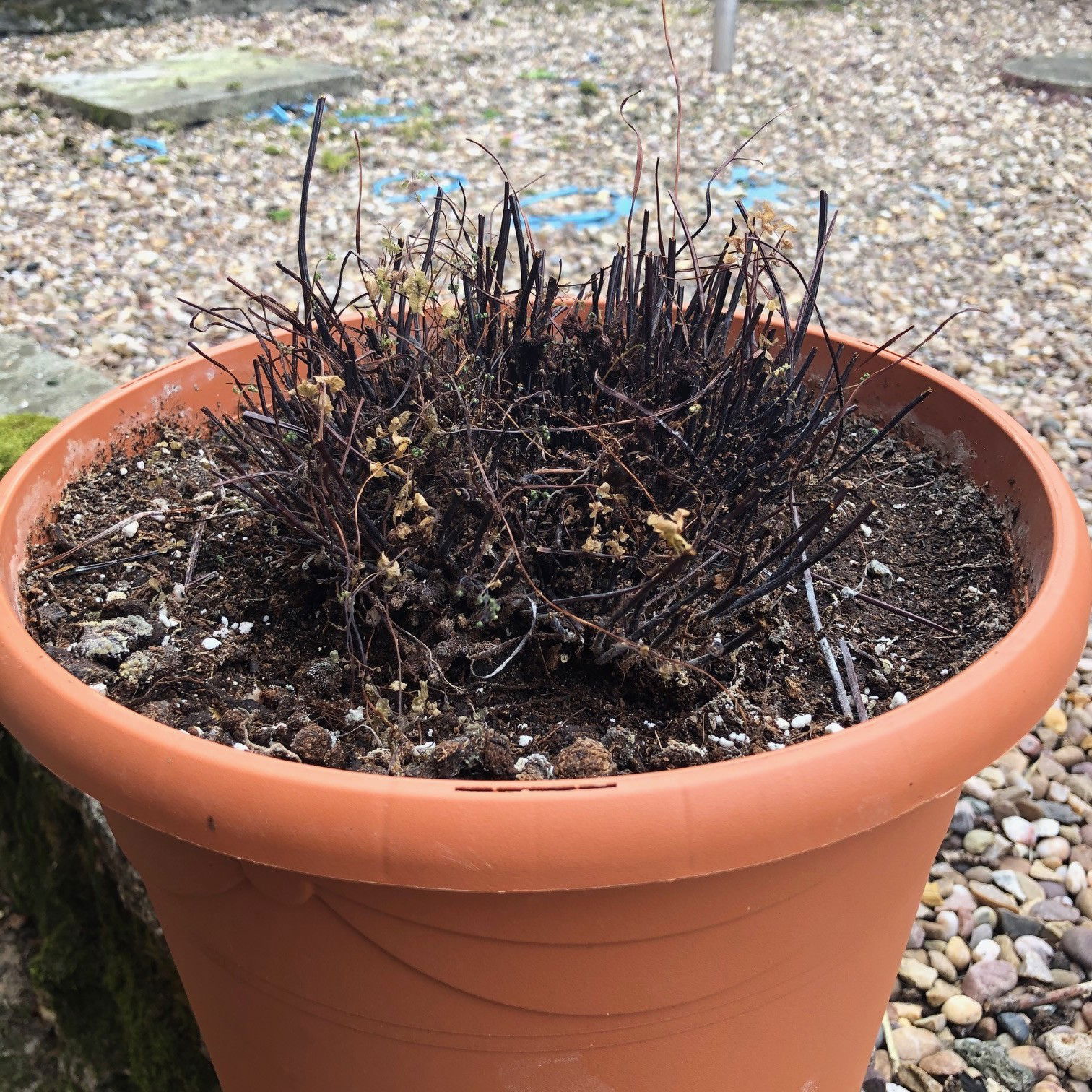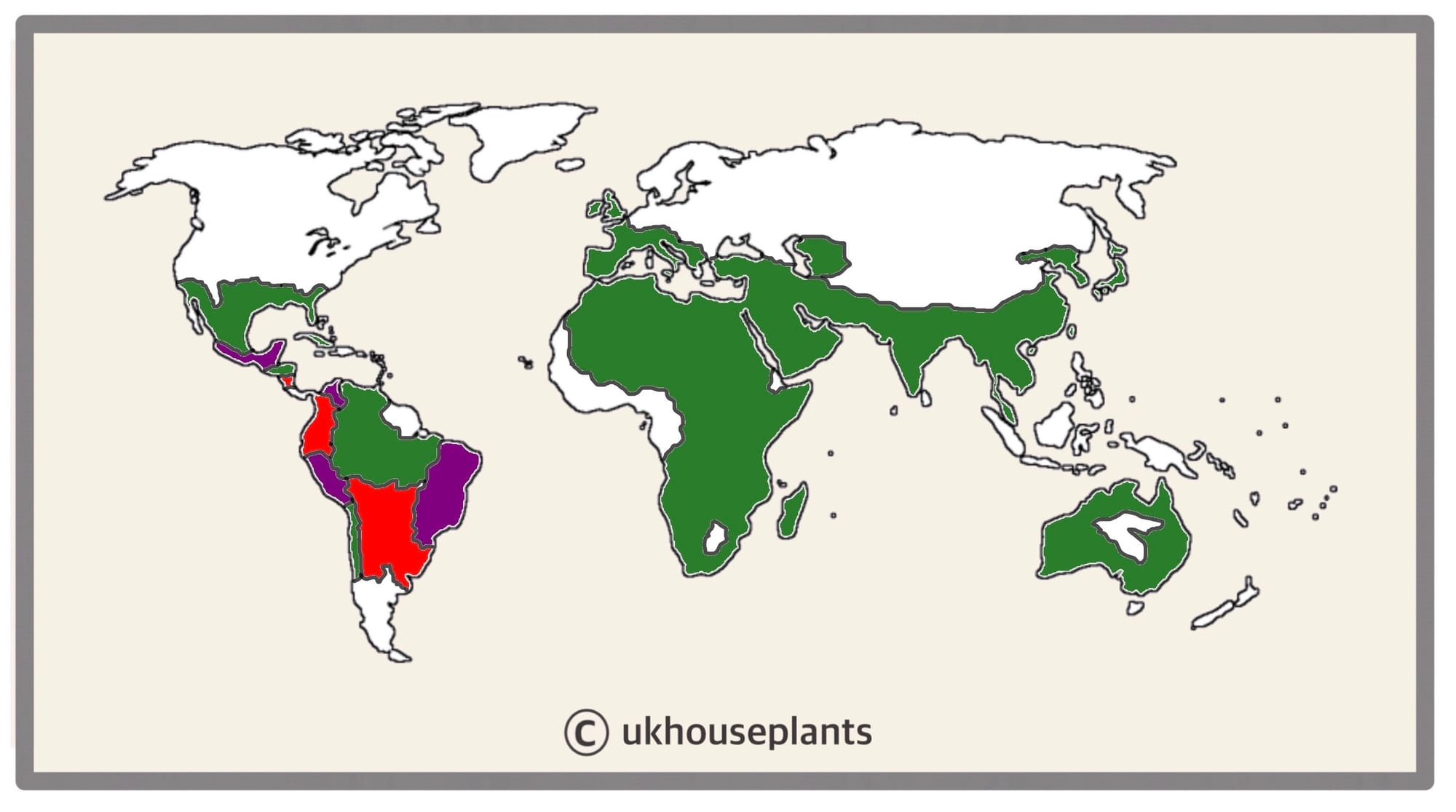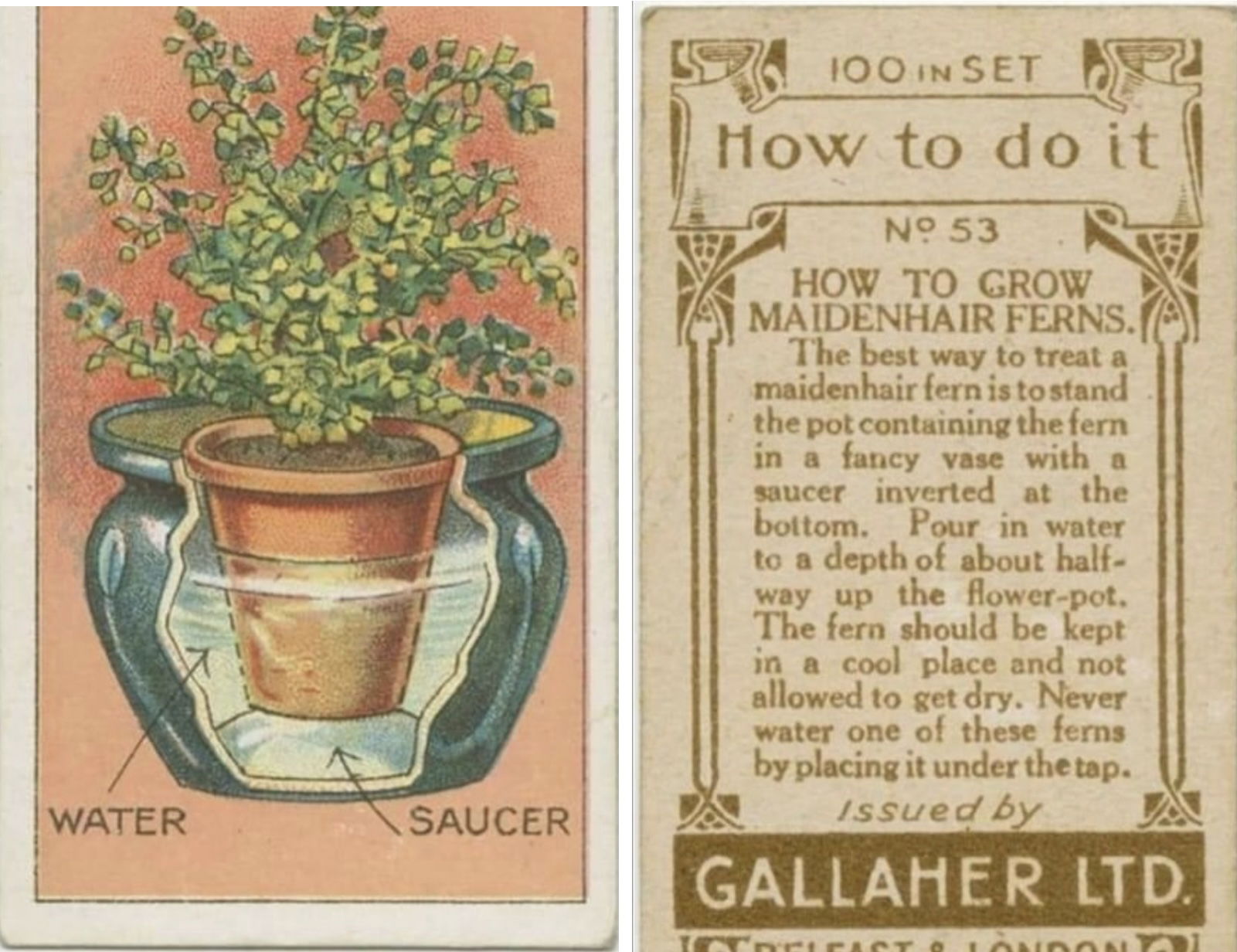
Adiantum capillus-veneris
Contents
- Top Tips
- Location, Water, Humidity & Fertilisation
- Common Issues
- Origins, Temperature, Propagation, Repotting & Toxicity.
Need the answer to a specific plant query? Book a 1-to-1 video call with THE HOUSEPLANT DOCTOR™, the website's friendly author, to overcome and address your niggling problem! Available on iMessage, WhatsApp, Facebook Messenger & more.
Top Tips & Info
- Care Difficulty - Moderate to Difficult
- Provide a bright, indirect location with adequate humidity and an absence of direct sun. If your specimen is situated in a shady environment, be sure to avoid over-saturating the central foliage as it may result in rhizome rot.
- Maintain good soil moisture throughout the growing period, allowing the top third to dry out in between waters; reduce this slightly in the dormancy period.
- Fertilise using a 'Houseplant' labelled feed every four waters in the spring and summer, reducing this to every six in the colder months.
- Repot every three years using a 'Houseplant' labelled compost and the next sized pot.
- Keep an eye out for Spider Mites that'll locate themselves along the ridges of the under-leaves.
- 'Tot' specimens in a 5cm pot (available at Blue Diamond stores in the U.K.) are perfect for tropical-themed terrariums or displays due to the slow growth habits!
- Has your Maidenhair Fern lost its foliage from yellowing or brown crispness? Scroll down to 'Common Issues' to learn more about what to do next!
Location & Light - 🔸🔸
Perfecting the amount of light a Maidenhair Fern receives is crucial for a long-lasting specimen. During the spring and summer, be sure to provide a brightly lit spot away from any direct light. Excessive exposure during this time will negatively affect the plant in the likes of sun-scorch and dehydration. Once the autumn kicks in, be sure to include an hour or two of direct light per day to get it through the dormancy period, lasting until the following spring.
Alternatively, lower-lit areas should only be used if wholly necessary. Although they can thrive in shady locations, the reduced rates of photosynthesis and too-moist soil may lead to root or crown rot. If mould develops on the compost's surface, this is a tell-tale sign of over-watering and too little light.
Water - 🔸🔸🔸
During the spring and summer, allow the soil's top third to dry out in between irrigations, reducing this further in the colder months. Persistent under-watering or direct sunlight will cause greying of leaves and crisping foliage that could easily spell the end for juvenile specimens. Under-watering symptoms include yellowing, browning or crispy leaves - these issues are usually due to a fault with its environment or cultivation - possibly down to forgetfulness, too much sunlight or heat. Over-watering symptoms include root rot, yellow/brown splodgy leaves closest to the soil and stem collapse. Although almost all ferns are fantastic with shady spots, they can easily suffer from root rot if kept in moisture for long periods. If you have noticed that the older, smaller fronds are starting to yellow and rot off, click on the link below to learn about combat over-watering and more specifically, root rot.
Humidity - 🔸🔸
Average room humidity is more than enough to satisfy this plant. Never situate it within a few metres of an operating radiator due to the enriched chance of browning frond-tips.
Fertilisation - 🔸
Feed every four waters during the growing period and every six in the autumn and winter, using a 'Houseplant' labelled fertiliser. Never apply a 'Ready to Use’ product into the soil without a pre-water first, as it may burn the roots and lead to yellowed leaves.
 In the wild, you'll frequently see Maidenhair Ferns thriving near to rivers or other water-sources. The A. aethiopicum pictured here is in Adelaide, Australia.
In the wild, you'll frequently see Maidenhair Ferns thriving near to rivers or other water-sources. The A. aethiopicum pictured here is in Adelaide, Australia.
Common Issues with Maidenhair Ferns
When a fern is severely dehydrated, most of its fronds will yellow and crisp-up - leaving you with a naked plant. Although it may spell the end of juvenile plantlets, there may still be light at the end of the tunnel for more established specimens. If its rhizomes are still plump without any signs of retraction, prune-away the severely affected areas and contain the plant (with its pot) in a transparent bag. Keep the soil continually moist, providing a good level of indirect light and temperatures above 15°C (59°F). Remove the bag every few days for around an hour to allow a fresh batch of air to circulate the stem and soil. After a few weeks, new life will form in the nodal junctions on the rhizomes' tips, signalling the start of its recovery process. Maintain a sealed environment for the following month until you feel it's necessary to release it back into the open air. For the prevention of environmental shock, be sure to introduce a humidity tray for higher levels of atmospheric moisture around the plant. Not only will this ease the specimen back into healthy functioning life, but it'll also reduce the rate of transpiration (water-loss in the leaves), and therefore downplay the risk of dehydration and further decline.
 Pruning back a dehydrated a Maidenhair Fern is an effective way to promote better juvenile growth.
Pruning back a dehydrated a Maidenhair Fern is an effective way to promote better juvenile growth.
Yellowing leaves are the result of either over-watering or excess moisture settling on the foliage, typically promoted by dark locations. Instead of pouring water directly onto the foliage, irrigate carefully at the soil line by lifting the foliage at the side to prevent wetting the leaves unnecessarily. Do not to over-water your fern if it's situated in a dark location as the combination of both overly moist soil and improper light will allow Rhizoctonia to develop beneath the soil line. For further information about this disease, click on this link. In some instances, yellowing leaves may be caused by under-watering. If this is the case, and the fern has endured persistent droughts, increase irrigations and avoid direct sunlight at all costs. The time in which it takes the specimen to bounce back solely relies on the cultivation and the quality of its current environment.
A dark location (shelves, etc.) will promote the fern to develop small or no juvenile leaves, giving the impression of 'leggy' or naked growth. The length between the nodes will also dramatically become larger, harvesting less energy that can be converted into sortable sugars. Be sure to increase the amount of indirect light somewhat, and give the specimen a gentle supplement of 'Houseplant' labelled feed to help with its stored energy.
Black roots are natural for Maidenhair Ferns. Only treat for root rot if the soil smells 'earthy' and the roots feel collapsed or squishy. Click on this link to learn about this issue and what to do next!
Due to the species' sensitivity to chemicals, Leaf Shine shouldn't be used to improve the appearance of the foliage, and instead should be cleaned via a rinse of lukewarm water. Failure to do so may cause yellowed, mottled spots that cannot be undone.
Never allow temperatures to dip below 8ºC (46ºF) as irreversible damage will occur in the likes of blackened foliage and weak health. When this happens, remove the severely affected areas and immediately improve growing conditions - never cut through softened yellow or brown growth. As rehabilitation can take several months because of its slow-growing nature, be sure to provide a stable location with better growing conditions to speed this process.
Mould developing on the soil means two things - too little light and over-watering. Despite the harmlessness of the mould, it'll prove unsightly to most gardeners and is therefore removed once known. To remove, replace the top two inches of the soil for a fresh batch of 'Houseplant' compost. Either increase the amount of light received slightly (no direct sunlight) or decreased the frequency of waters slightly. If yellowing older fronds accompany the mould, you may also have a case of root rot.
Origins
Adiantum consists of 250 species spanning across six continents. The word, Adiantum, means 'unwetted' in Greek, referring to their ability to shed water without becoming saturated. The Maidenhair Fern has had a wealth of European uses since it was discovered in the 18th century by Carl Linnaeus, including medicinal shampoo, hair restorers and even snakebite applicants!
The two most common Maidenhair Ferns, the Adiantum capillus-veneris & A. raddianum, sport the typical thin, feathery leaves that are formed at the stipe terminals. Their distribution of nativity is complex and diverse. The latter, A. raddianum, was named after 19th Italian century botanist, Giuseppe Raddi, whose work focused mostly on Brazilian neotropical species.
 The Distribution of A. capillus-veneris in Green, A. raddianum in Red & both in Purple.
The Distribution of A. capillus-veneris in Green, A. raddianum in Red & both in Purple.
Temperature
10° - 26°C (50° - 80°F)
H1b (Hardiness Zone 12) - Can be grown outdoors during the summer in a sheltered location with temperatures above 12℃ (54℉), but is fine to remain indoors, too. If you decide to bring this plant outdoors, don't allow it to endure any direct sunlight as it may result in sun-scorch and dehydration. Regularly keep an eye out for pests, especially when re-introducing it back indoors.
Spread
Up to 0.8m in both height and width, with the ultimate height taking between 5 - 8 years to achieve.
Pruning & Maintenance
If your Maidenhair Fern has lost all of its leaves - fear not. They can sometimes be grown like an herbaceous perennial, meaning all of its foliage can be cut back to the soil for a fresh set of leaves in the following springtime. Pruning back this Fern is easy, too; simply prune each stem around 5cm from the soil (2 inches) and place the potted plant in a warm, bright location. If you maintain evenly moist soil and feed every third water, your Fern should begin shooting fresh foliage in the next month or so.
You can also prune off individual stems where its leaves have yellowed/browned over, around 5cm (2 inches) from the soil. It'll bounce back in no time if it's given warmth, regular soil moisture and fertiliser every third water!
Propagation
Via Spores & Basal Offset Division
Spores - You may have noticed little brown spots under the leaves - those are reproductive spores that can be propagated in the same way as seeds, once matured. These zygotes will develop on the under-leaves of each frond; you'll know when they're ready to be propagated, as they'll brown over and begin to crisp.
- Choose an appropriate potting-mix; we'd recommend a 'Houseplant' labelled compost as it boasts a good balance of drainage and water retention. Place the soil into a plastic pot (any size is fine) that has adequate drainage holes.
- Separate the spores from the under-leaves using your hands. If the spores are brown and crispy, but can't be removed, cut the entire frond off. Make sure that the diameter of the pot is wider than the frond's span; however, you can cut the frond (sideways) to fit the desired container better.
- Place the spores or fronds ON TOP of the compost, making sure that they sit flat against the soil-line.
- If you've managed to separate the spores, maintain moist soil by misting the top layer every few days. Do not submerge into the compost as this will reduce the rates of success. For those who still have entire fronds, place the foliage on top of dry compost. The dehydration will allow the spores to detach from the leaf, settling on the soil below.
- Place the potted spores/fronds into a transparent bag and situate it into a bright, indirect location. Provide temperatures above 18°F (64°F).
- Keep the spores moist, misting the top layer of the soil every few days. The fronds, however, must stay dry until you start to notice missing spores from the under-leaves. Once the majority have detached, discard the frond and begin misting the soil to aid hydration.
- As long as you provide high humidity (aided by the transparent bag locking in moist air) and good soil moisture, germination should begin. This process can take up to two months, but don't discard until it hits five months of nothingness.
Once the spores have developed their first frond, place them into their own pot to grow. Safely remove the transparent bag and follow the care requirements listed at the top of the article.
Rhizomatous Offshoot Division (Easy) - Your plant will produce several basal offsets that can be separated once they have a sufficient root system, and surpass 8cm in frond length. If possible, water the soil 24hrs before the main event to reduce the risk of transplant shock, when its dry root systems are over-fingered. Take the plant out of its pot and place your fingers close to the nodal junction - soil may have to be removed for better access. Push the chosen offset downwards until you hear a snap. Separate the foliage and its root system away from the mother plant, mentally noting the high risk of damage. Transplant in the appropriate sized pot with a fresh batch of 'Houseplant' compost. Maintain evenly moist soil and situate it in a bright, indirect location away from any direct sunlight. After ten weeks, treat it like a healthy specimen, following the care tips above!
Flowering
True ferns will not flower and instead must be propagated by either spores, rhizomes, plantlets or stems, depending on the species.
Repotting
Repot every three years in the spring, using a 'Houseplant' labelled compost and the next sized pot with adequate drainage. Hydrate the plant 24hrs before tinkering with the roots to prevent the risk of transplant shock. For those that are situated in a darker location, add a thin layer of small grit in the pot's base to improve drainage and downplay over-watering. Click here for a detailed step-by-step guide on transplantation, or via this link to learn about repotting with root rot.
Book a 1-to-1 video call with THE HOUSEPLANT DOCTOR™ if you'd like a personal guide to repotting your houseplant. This will include recommending the right branded-compost and pot size, followed by a live video call whilst you transplant the specimen for step-by-step guidance and answer any further questions!
Pests & Diseases
Keep an eye out for mealybugs, aphids, spider mites, blackfly & root mealybugs that'll locate themselves in the cubbyholes and undersides of the leaves, with the exception of the latter in soil. Common diseases associated with Maidenhair Ferns are root rot, leaf-spot disease, botrytis, rust, powdery mildew & southern blight - click here to learn more about these issues.
Toxicity
Not known to be poisonous by consumption of pets and humans. If high quantities are eaten, it may result in vomiting, nausea and a loss of appetite.
 We found an old matchbox card that detailed care advice for a Maidenhair Fern, as part of a 100-piece set dating back to the early-mid 20th century. Credit: Gallagher Ltd.
We found an old matchbox card that detailed care advice for a Maidenhair Fern, as part of a 100-piece set dating back to the early-mid 20th century. Credit: Gallagher Ltd.
Retail Locations
Dobbies, Online Stores.
Book a 1-to-1 Call with THE HOUSEPLANT DOCTOR™
If you need further advice with your houseplants, book an advice call with ukhouseplants' friendly and expert writer today! This can be done via a video or audio call on most apps, including Facebook, FaceTime & Skype. A ten-minute call costs £5.99 (US$7), or £15.99 for thirty minutes. You can ask multiple questions, including queries on plants, pests, terrariums, repotting advice and anything in between. Please consider supporting this service to keep ukhouseplants thriving!